Shijing Wang
Fine-grained Video Dubbing Duration Alignment with Segment Supervised Preference Optimization
Aug 12, 2025Abstract:Video dubbing aims to translate original speech in visual media programs from the source language to the target language, relying on neural machine translation and text-to-speech technologies. Due to varying information densities across languages, target speech often mismatches the source speech duration, causing audio-video synchronization issues that significantly impact viewer experience. In this study, we approach duration alignment in LLM-based video dubbing machine translation as a preference optimization problem. We propose the Segment Supervised Preference Optimization (SSPO) method, which employs a segment-wise sampling strategy and fine-grained loss to mitigate duration mismatches between source and target lines. Experimental results demonstrate that SSPO achieves superior performance in duration alignment tasks.
* This paper is accepted by ACL2025 (Main)
Suppressing Uncertainty in Gaze Estimation
Dec 17, 2024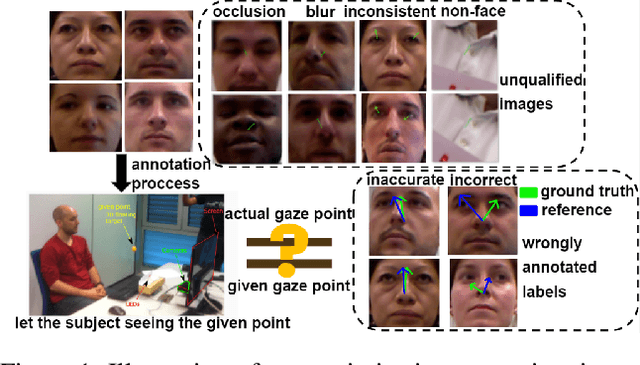
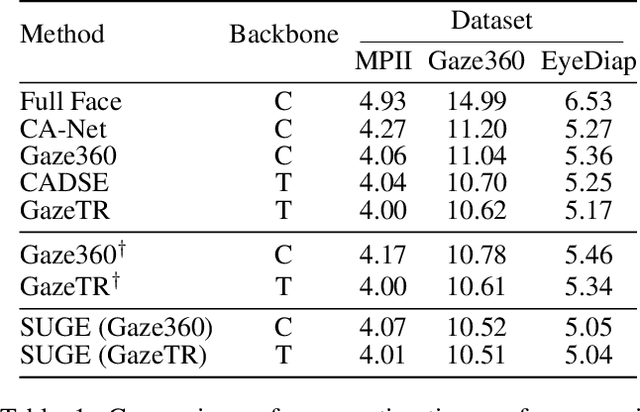
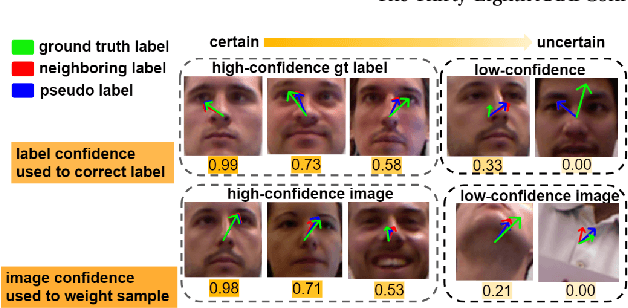
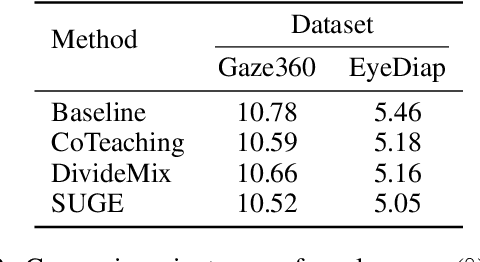
Abstract:Uncertainty in gaze estimation manifests in two aspects: 1) low-quality images caused by occlusion, blurriness, inconsistent eye movements, or even non-face images; 2) incorrect labels resulting from the misalignment between the labeled and actual gaze points during the annotation process. Allowing these uncertainties to participate in training hinders the improvement of gaze estimation. To tackle these challenges, in this paper, we propose an effective solution, named Suppressing Uncertainty in Gaze Estimation (SUGE), which introduces a novel triplet-label consistency measurement to estimate and reduce the uncertainties. Specifically, for each training sample, we propose to estimate a novel ``neighboring label'' calculated by a linearly weighted projection from the neighbors to capture the similarity relationship between image features and their corresponding labels, which can be incorporated with the predicted pseudo label and ground-truth label for uncertainty estimation. By modeling such triplet-label consistency, we can measure the qualities of both images and labels, and further largely reduce the negative effects of unqualified images and wrong labels through our designed sample weighting and label correction strategies. Experimental results on the gaze estimation benchmarks indicate that our proposed SUGE achieves state-of-the-art performance.
Cross-Dataset Gaze Estimation by Evidential Inter-intra Fusion
Sep 07, 2024



Abstract:Achieving accurate and reliable gaze predictions in complex and diverse environments remains challenging. Fortunately, it is straightforward to access diverse gaze datasets in real-world applications. We discover that training these datasets jointly can significantly improve the generalization of gaze estimation, which is overlooked in previous works. However, due to the inherent distribution shift across different datasets, simply mixing multiple dataset decreases the performance in the original domain despite gaining better generalization abilities. To address the problem of ``cross-dataset gaze estimation'', we propose a novel Evidential Inter-intra Fusion EIF framework, for training a cross-dataset model that performs well across all source and unseen domains. Specifically, we build independent single-dataset branches for various datasets where the data space is partitioned into overlapping subspaces within each dataset for local regression, and further create a cross-dataset branch to integrate the generalizable features from single-dataset branches. Furthermore, evidential regressors based on the Normal and Inverse-Gamma (NIG) distribution are designed to additionally provide uncertainty estimation apart from predicting gaze. Building upon this foundation, our proposed framework achieves both intra-evidential fusion among multiple local regressors within each dataset and inter-evidential fusion among multiple branches by Mixture \textbfof Normal Inverse-Gamma (MoNIG distribution. Experiments demonstrate that our method consistently achieves notable improvements in both source domains and unseen domains.
PCIE_LAM Solution for Ego4D Looking At Me Challenge
Jun 18, 2024


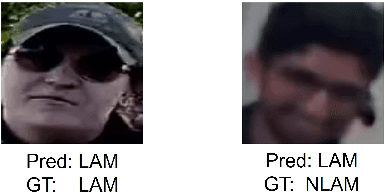
Abstract:This report presents our team's 'PCIE_LAM' solution for the Ego4D Looking At Me Challenge at CVPR2024. The main goal of the challenge is to accurately determine if a person in the scene is looking at the camera wearer, based on a video where the faces of social partners have been localized. Our proposed solution, InternLSTM, consists of an InternVL image encoder and a Bi-LSTM network. The InternVL extracts spatial features, while the Bi-LSTM extracts temporal features. However, this task is highly challenging due to the distance between the person in the scene and the camera movement, which results in significant blurring in the face image. To address the complexity of the task, we implemented a Gaze Smoothing filter to eliminate noise or spikes from the output. Our approach achieved the 1st position in the looking at me challenge with 0.81 mAP and 0.93 accuracy rate. Code is available at https://github.com/KanokphanL/Ego4D_LAM_InternLSTM
EduNLP: Towards a Unified and Modularized Library for Educational Resources
Jun 04, 2024
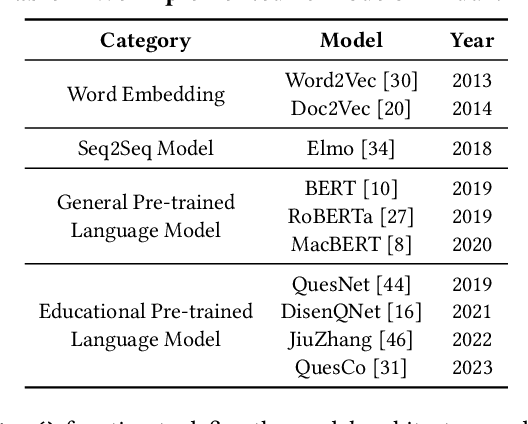
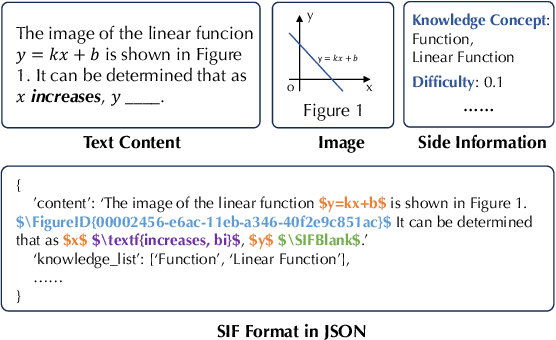
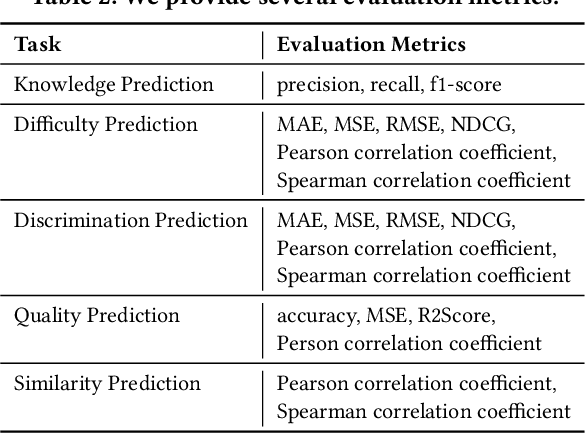
Abstract:Educational resource understanding is vital to online learning platforms, which have demonstrated growing applications recently. However, researchers and developers always struggle with using existing general natural language toolkits or domain-specific models. The issue raises a need to develop an effective and easy-to-use one that benefits AI education-related research and applications. To bridge this gap, we present a unified, modularized, and extensive library, EduNLP, focusing on educational resource understanding. In the library, we decouple the whole workflow to four key modules with consistent interfaces including data configuration, processing, model implementation, and model evaluation. We also provide a configurable pipeline to unify the data usage and model usage in standard ways, where users can customize their own needs. For the current version, we primarily provide 10 typical models from four categories, and 5 common downstream-evaluation tasks in the education domain on 8 subjects for users' usage. The project is released at: https://github.com/bigdata-ustc/EduNLP.
Sequential Tag Recommendation
Oct 09, 2023Abstract:With the development of Internet technology and the expansion of social networks, online platforms have become an important way for people to obtain information. The introduction of tags facilitates information categorization and retrieval. Meanwhile, the development of tag recommendation systems not only enables users to input tags more efficiently, but also improves the quality of tags. However, current tag recommendation methods only consider the content of the current post and do not take into account the influence of user preferences. Since the main body of tag recommendation is the user, it is very necessary to obtain the user's tagging habits. Therefore, this paper proposes a tag recommendation algorithm (MLP4STR) based on the dynamic preference of user's behavioral sequence, which models the user's historical post information and historical tag information to obtain the user's dynamic interest changes. A pure MLP structure across feature dimensions is used in sequence modeling to model the interaction between tag content and post content to fully extract the user's interests. Finally tag recommendation is performed.
 Add to Chrome
Add to Chrome Add to Firefox
Add to Firefox Add to Edge
Add to Edge